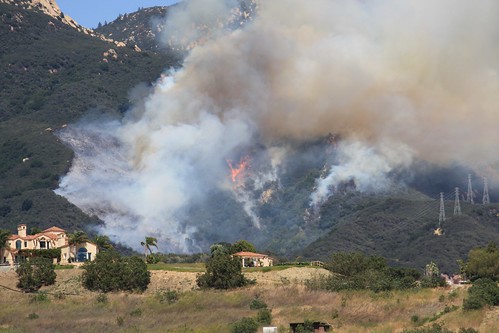 Small fire departments facing long-term financial sustainability questions
Small fire departments facing long-term financial sustainability questions
by Brian Leubitz
Last night I attended a meeting of the Bodega Bay Fire Protection District. Not normally the type of event that I cover here at Calitics, but beyond some self-interest, it was a fascinating experience. The meeting was attended by embattled Sonoma County Supervisor Efren Carillo as well as a host of Sonoma County officials from the City Administrator’s office, the Parks Dept, and County fire dept.
The reason for the meeting was pretty simple: the fire district is running out of money. If nothing happens in the next 15 months, crews will be cut from three to two leaving the district incapable of responding to simultaneous incidents. Of course, the money question brings up a series of other questions. First, to clear it out of the way, as far as I can see there has been no issues of any kind of glaring mismanagement. Rather, it is a case of a system set up to fail doing just that.
It wasn’t always that way. The fire district is post-Prop 13 district, which is something of an immediate strike one in terms of revenues. But in a county that gets a lot of tourists, it is particularly popular. The tiny hamlet of about 1,000 attracts over 13% of Sonoma County’s transient occupancy tax (TOT) and over 4 million visitors per year. Putting aside the issues of collecting that tax, particularly for airbnb and similar services, almost all of the burden for providing fire and ambulance services falls upon local property owners. It is why Bodega Bay has one of the highest parcel taxes for a fire district in the state.
At the meeting last night, many homeowners expressed frustration with the lack of TOT coming back to the community. While there has been varying levels of support over the last few years, next year’s budget includes no such support for the district after the district’s proposal to replace their aging ambulance was rejected. Given the large number of tourists, and the fact that 57% of calls were for non-residents, many feel they are carrying an outsized burden and subsidizing ambulance protection for the state and county parks in the district.
There are additional available revenue sources, the county general fund, and Prop 172 funds chief among them. There is a change.org petition here about the Prop 172 fund that I highly recommend folks sign.
The County officials certainly seem committed to working on finding additional sources of revenue, and residents are organizing to make their presence known at the budget hearings this June. And in an election held on April 8 (because of a recall election in the neighboring Russian River fire district), a new tax measure, Measure A, was defeated by a final tally of 206-356. Most of the reasons for that failure are listed above, but the consensus last night was that it was mostly the unfair burden on the small community surrounding the parks. Well, that and a bit of off-topic ass-hattery calling for a No vote based on “saving the salmon”.
All this brings us back to the whole system set up to fail. In the world after Prop 13, revenue is increasingly difficult to acquire, and because it can, money tends to drip upward to the state. In case after case, the state has reached for local money to pay for various constitutional requirements. While some of that has come back, including through Prop 172, somehow it is never really replaced. Counties are then forced to reach down the ladder to finesse finances, and it becomes harder and harder to consistently fund local districts. (See the closure of Palm Drive hospital, which also complicates the situation in Bodega Bay.) And then you have situations like the $150 fire fee, where the money never actually went to the fire districts that actually did the fire protection.
Perhaps the system was meant to fail, or perhaps it is just a patchwork system that now has seen so many patches that the entire system is now completely dysfunctional. But in the end, the long-term answers need to come from the state. If we are to have this local control of our fire protection and other public services, they need to be able to access their fair share of revenue to provide these vital public services.


 As if on cue, Mother Nature reminds us that in a dry and fire-prone state such as ours, it is
As if on cue, Mother Nature reminds us that in a dry and fire-prone state such as ours, it is